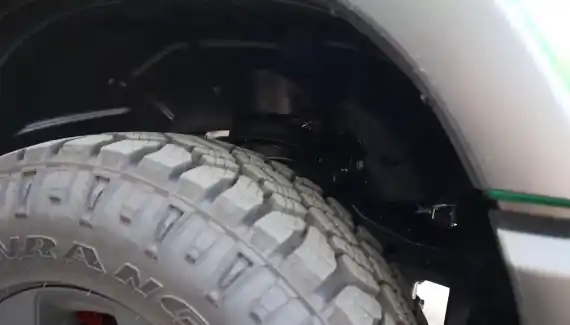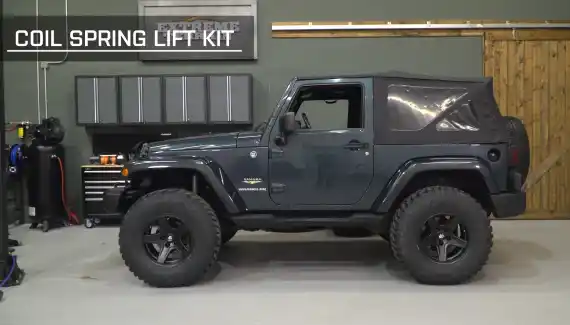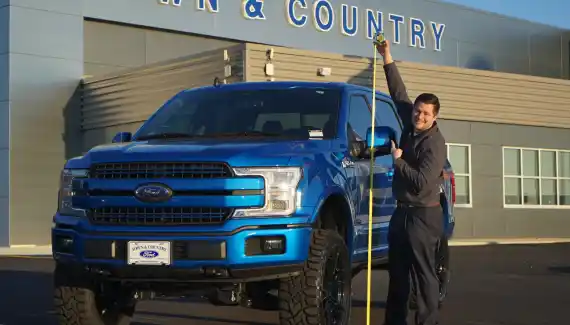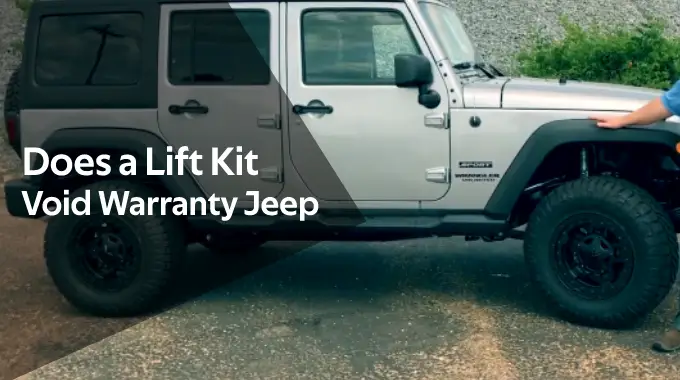Last Updated on April 5, 2023
If you’re ready to customize your jeep and give it a unique off-roading look, consider installing a lift kit. You may be worried that this voids the warranty on your Jeep, but in most cases, adding one of these kits won’t have any effect. So, don’t worry about losing protection for future repairs if you standardize.
There is no doubt that your Jeep is a tough, dependable vehicle able to handle even the toughest terrain with ease. Careless modifications can void your warranty and leave you stranded if you do not follow instructions.
Would you like to ensure your Jeep is covered with a reliable warranty? Read on to avoid any pitfalls when installing it to keep your warranty intact.
Does a Lift Kit Void Warranty Jeep: Common Acts

Install a lift kit to make your Jeep stand out, but this job requires precision and attention to detail. One wrong move could lead you down an expensive road of repairs that will void any warranty coverage.
These are some things to watch out for:
Improper Torque and Fastener Specifications
Installing a lift kit requires accuracy and attention to detail, as even something as small as not properly tightening down bolts and nuts can cause massive issues. If the fasteners that connect components of your lift kit are not torqued to the correct specifications, it can lead to several hazardous problems.
Not only can it cause parts to crack or break due to overtightening, but it can also lead to loose parts if they are under-tightened. Additionally, improper tension can cause vibration problems and premature failure in some components.
You must follow the specific instructions for each part of the lift kit installation process to ensure proper lift kit installation and maintain your warranty.
Poor Tolerances in Components
Another mistake that could potentially void your Jeep warranty is poor tolerances in components. Bearing and bushings with insufficient clearance can cause excessive play, leading to accelerated wear on internal components.
Also, poor tolerances can cause vibration, noise, and premature tire failure if a tire/wheel assembly becomes unbalanced.
Installing a lift kit requires that all components have the correct clearances to avoid damaging other parts or affecting the vehicle’s performance.
Incompatible Parts or Modifications

When considering modifications or replacing any OEM parts with aftermarket ones, it is important that they are compatible with one another. Different threading or bolt sizes between modified parts can cause incorrect geometry when installed, resulting in expensive repairs if not promptly corrected.
Also, if an aftermarket part does not perform as well as a factory OEM part due to differences in materials or design, this could void your Jeep’s warranty. Therefore, research into compatibility and quality is key when deciding whether or not an aftermarket part will be used for any part of a lift kit installation process.
Improper Alignment After Installation
Installing a lift kit improperly can quickly void the warranty of your Jeep and lead to much bigger problems. Too often, people who install lifts themselves don’t take the time to align them properly, and this is a huge mistake.
If a lift isn’t aligned correctly, it can cause many issues, such as inconsistent handling, premature tire wear, and excessive noise when driving a jeep wrangler. Also, misaligned caster settings can make steering difficult, while an incorrect ride height can result in abnormal camber settings that reduce lateral stability.
Then too, not aligning shift linkage correctly can also lead to hard shifts. Further, if the lift is installed unlevel, it can cause uneven brake wear and vibrations from the drivetrain that will put unnecessary strain on its components.
Unbalanced Brake System Components
When brake parts like calipers, rotors, pads, lines, etc., are not balanced correctly, it leads to inefficient brake performance. The result of this is premature failure of the system components. Therefore, regular checks must be carried out on your brakes to avoid such failures.
Replacing certain components to maintain proper balance throughout the system might also be necessary. This ensures maximum braking efficiency and reliability while avoiding any potential warranty issues.
Jeep Lifting Tips That Won’t Void Your Warranty

As you can see, there are many things to consider when installing a lift kit that may void your Jeep’s warranty. To ensure the correct installation of your jeep lift kit and maintain your warranty, you should follow these tips:
Purchase Quality Lifting Parts
The first step in lifting your Jeep without voiding its warranty is purchasing quality components from trustworthy vendors. Look for parts that come with manufacturer warranties, as these are more likely to be reliable and compatible with your Jeep.
Consult Your Manual
It’s essential to consult your Jeep’s manual before modifying the suspension system. It’ll tell you what lift heights are safe and what components to use. Not following these guidelines, you might get an imbalance in weight distribution or bad tire alignment. Both will void the vehicle’s warranty.
Opt for Factory-Approved Lift Kits
Aftermarket body lift kits are all the rage right now, and many of them offer better quality and performance than factory-approved kits. A factory-approved kit would be a better choice to protect your warranty while improving your car’s performance.
Double Check For Compatibility
Check their compatibility first before you install any parts on your vehicle, even if they’re from the same manufacturer. Any new parts you buy should work with existing parts to avoid issues that could void warranties or damage other parts.
Have An Expert Install It
Even if you’ve modified cars before, having a professional install all new lift equipment is still a good idea to protect existing warranties. Professionals have access to a range of high-quality tools and knowledge about specific vehicles.
By doing so, everything gets installed correctly and safely without overstressing certain components (which might cause problems down the road).
Use High-Quality Shocks & Springs: Purchasing top-quality shocks and springs can make a difference in terms of performance and safety while preserving warranties on certain elements like brakes and wheels. Hence, they can reduce wear & tear over time while extending their useful life.
Adjust Tire Alignment Periodically: Adjusting tire alignment periodically after installation helps keep things running smoothly. All the while avoiding unnecessary strain on steering systems that could lead to warranty issues.
Note: Don’t forget this after off-roading, as uneven terrain levels need to be adjusted before taking highways.
Is There a Height Limit For Lift Kits Without Voiding Jeep’s Warranty?

Generally speaking, lift kits have no height limit without voiding a Jeep’s warranty. Although, it is recommended by Jeep that lifting kits added to their vehicles should not exceed 4 inches to avoid putting too much stress on its chassis and potentially voiding its warranty.
Anything over this could cause undue strain on components such as shock absorbers, ball joints, tie rods, and other chassis components, which may lead to premature failure. Moreover, exceeding 4 inches of lift will increase the chance of bottoming out or ground clearance issues when off-roading.
Can a Lift Kit Void a Jeep Warranty If It Creates Any Safety Issues?
A lift kit can void your Jeep warranty if it causes safety issues. This is because the Jeep manufacturer wants to ensure that their vehicles are safe and reliable, and modifications such as lift kits can interfere with this goal.
If the lift kit causes any issues related to suspension or brakes, then it could put the occupants at risk and potentially void the warranty.
Also, if the body lift kit causes excessive wear and tear on other components due to increased stress on them. A voided warranty may also result from this situation. Before making any mods, owners must consider how they might affect their vehicle’s safety and reliability.
What Warranties Do Lift Kits Don’t Void?
A lift kit typically voids any suspension-related warranties on your Jeep. This includes any warranty associated with the steering, brakes, drivetrain components and tires that may be affected by the lift kit. Aside from that, most manufacturers will not honor any warranty claim for mechanical damage caused by installing a lift kit.
When installing an aftermarket suspension, the engine, electronics, cooling system, and other covered warranties remain intact and are not affected. Generally speaking, tires, wheels, and suspension modifications will not stress the car’s other components, so they can usually be modified without voiding the warranty.
The warranty may only be voided if it is found that any damage caused to another component was a direct result of these modifications.
What’s the Impact Of a Lift Kit On Resale Value?

The impact of installing a lift kit on a vehicle’s resale value depends heavily on the buyer. Some buyers may see the suspension lift kit as an added bonus and be willing to pay extra, while others may see it as a potential issue and not be interested in paying more.
Aside from that, there are some cases where installing a lift kit could potentially decrease a vehicle’s resale value if done incorrectly or with inferior parts. For example, if an inexperienced installer uses cheap parts and causes permanent damage to the vehicle, it could significantly reduce its resale value.
Generally speaking, a lift kit shouldn’t hurt your resale value if done correctly by an experienced installer with good-quality parts.
Upgrade Your Jeep Without Risking the Warranty
So, want to spruce up your Jeep with a lift kit but worried about losing warranty protection? Don’t worry. There are ways you can stay within the boundaries of any restrictions from your provider. Research into which components could void your coverage is all it takes for an exciting, upgraded ride without sacrificing safety.
Installing a lift kit can be tricky, so it’s essential to ensure that you or your mechanic follow all directions and safety protocols. Doing this will help guarantee the quality of craftsmanship as well as uphold any warranties against unforeseen issues down the line.
The decision to invest in an aftermarket product with coverage straight from its manufacturer is a smart choice.
